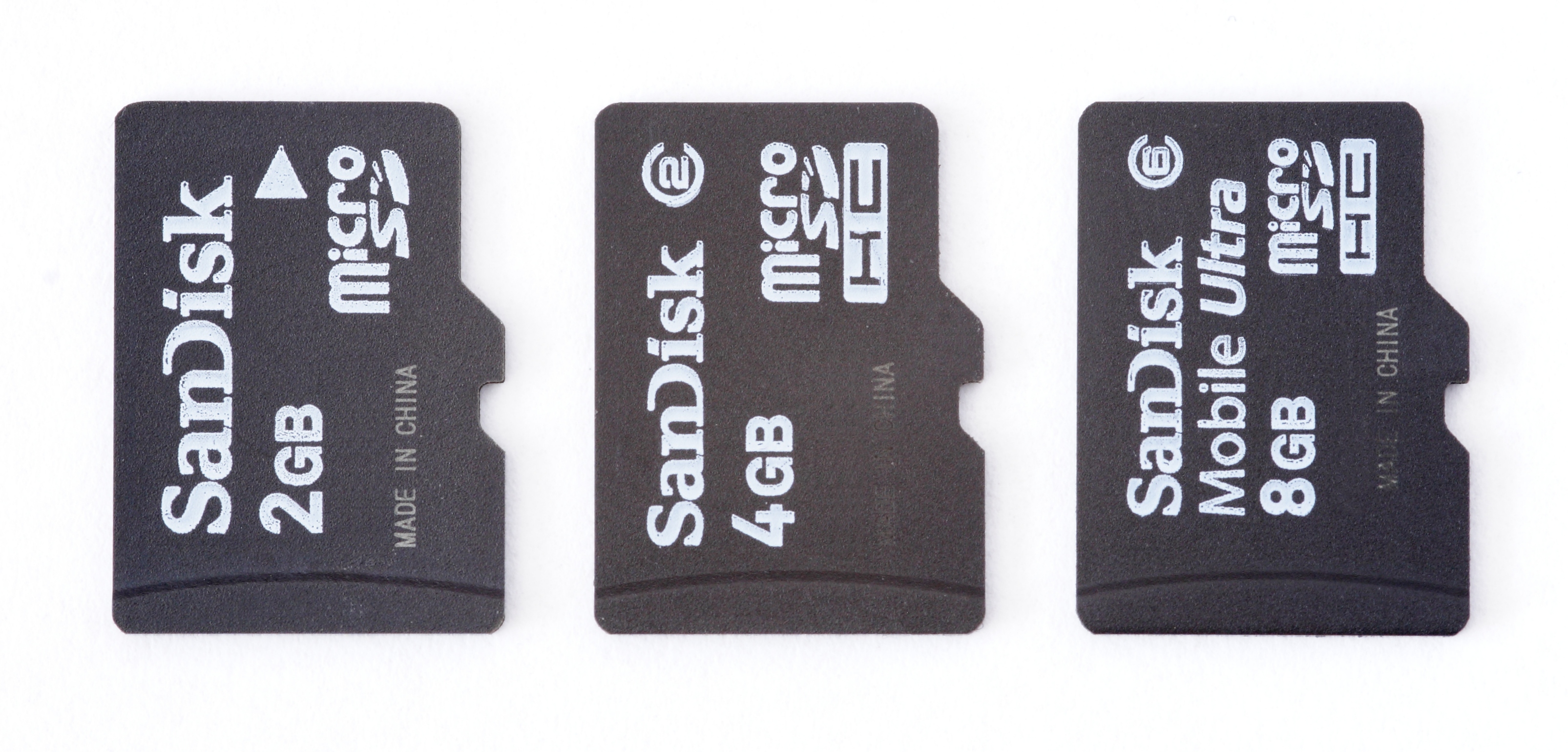Can you help me understand all the numbers on SD camera cards?
This question was answered on February 15, 2018. Much of the information contained herein may have changed since posting.
 Today’s memory cards are a confusing batch of geek speak, but once you understand some of the basics, it might make it easier to digest.
Today’s memory cards are a confusing batch of geek speak, but once you understand some of the basics, it might make it easier to digest.
Physical Size
Most of today’s devices use either SD or microSD cards, which you can determine by looking at the card slot on your camera.
Storage Capacity
The easiest specification to digest is the storage capacity, which is represented in gigabytes (GB). It’s easy to assume that the bigger the number, the better – in reality, this is not necessarily the case.
Not only can it be cheaper to use multiple smaller cards, you won’t live and die with just one card because they do degrade, get lost or experience data corruption.
SD vs SDHC vs SDXC
A memory card’s capacity is determined by the file system being used to store data designated by the type of card.
SD (Secure Digital) cards are the oldest, least used and limited to 2GB of storage.
SDHC (High Capacity) cards can store up to 32 GB of data, while SDXC (eXtended Capacity) cards can store up to 2 Terabytes (2000 GB).
Older devices may not be able to use the SDXC format, so make sure your device does support these larger cards before buying one.
Rated Speed
This is where things can get a bit confusing, as there can be various designations referring to the card’s speed. It’s represented in MB/s (megabytes per second) or a large number followed by an ‘x’ or sometimes both.
The ‘x’ designation is a marketing term - 1x represents 150 kb/s, so 600x is the same as a 90 MB/s rating (600 x 150 = 90,000). This number typically represent the ‘read’ speed, which is generally higher than the ‘write’ speed.
Speed Class
This specification is represented on the card as a number inside of the letter ‘C‘ to represent the minimum write speed and is most important to those shooting video or very large images in succession (burst mode).
There are four classes: 2, 4, 6 and 10 which represents the minimum sustained megabytes per second (MB/s) write speed – the higher the number, the faster the sustained speed.
UHS Speed Class
Faster SDXC memory cards will have the UHS or Ultra High Speed rating represented by a number inside the letter ‘U’. U1 means it’s 10 MB/s while U3 means it’s rated at 30 MB/s.
UHS Bus Class
Different from the UHS Speed Class, this rating refers to the ‘bus interface’ and is represented by a roman numeral. Think of the ‘bus interface’ as the number of lanes on a freeway vs the UHS Speed Class, which represents the speed of individual cars.
Video Speed Class
If you’re trying to shoot extremely high-resolution video (4 or 8K), this class of cards designated by the letter V and a number that ranges from 6 to 90 offers the fastest sustained write speeds (https://goo.gl/X9iuhW).
Overkill vs Future Proofing
If you have older equipment that you plan on upgrading soon, getting a faster card then you currently need may make sense, otherwise don’t spend more money then you need to as there’s no performance benefit.
To help you figure out what you actually need, checkout SanDisk’s web tool: https://goo.gl/4nGJUR. Once you figure out the specs for your desired card, you can easily comparison shop around the Internet.
About the author
Posted by Ken Colburn of Data Doctors on February 15, 2018
Need Help with this Issue?
We help people with technology! It's what we do.
Contact or Schedule an Appointment with a location for help!

